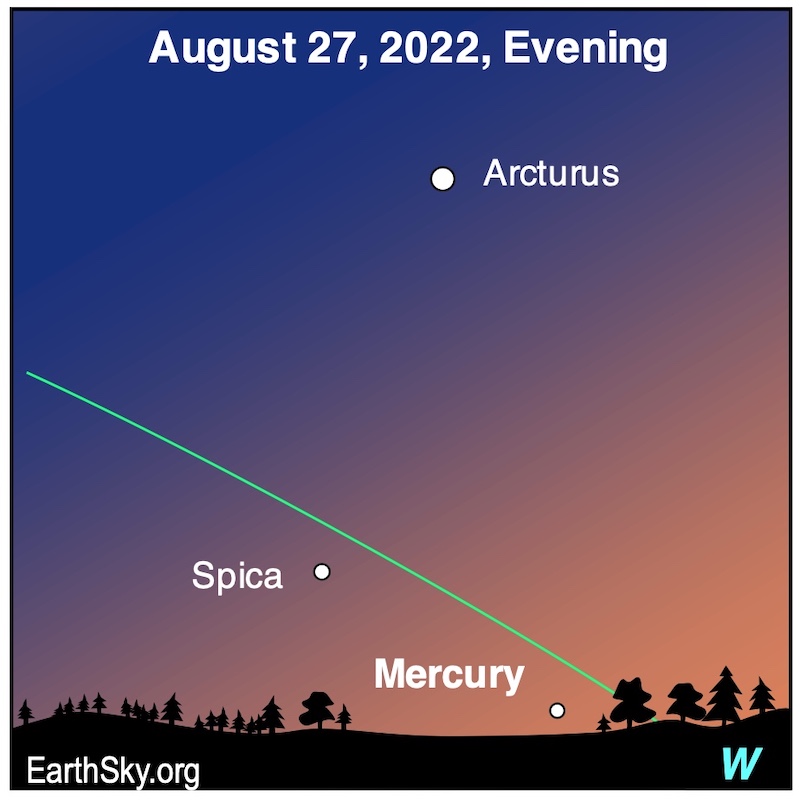
Mercury is having a great evening apparition in August 2022 … for the Southern Hemisphere. For us in the Northern Hemisphere, Mercury appears low in the evening twilight horizon throughout August, tough to see. But a careful search with binoculars might bring the little planet into view.
Where to look: Look for Mercury in the sunset direction, as soon as the sky begins to darken. Northern Hemisphere observers: Try sweeping for Mercury with binoculars. It might surprise you, and pop into view.
When to look: Mercury begins this evening apparition in late July. It’ll disappear again by mid-September.
Greatest elongation is 16 UTC on August 27, 2022. At greatest elongation, Mercury is farthest from the sunset for this evening apparition, 27 degrees from the sun in the evening sky.
Note: As the innermost planet, Mercury is tied to the sun in our sky. As a result, it never ventures very far above the horizon after sunset. As soon as the sun disappears below your horizon, the clock starts ticking. So, will you see the glowing point of light that is Mercury before it follows the setting sun?
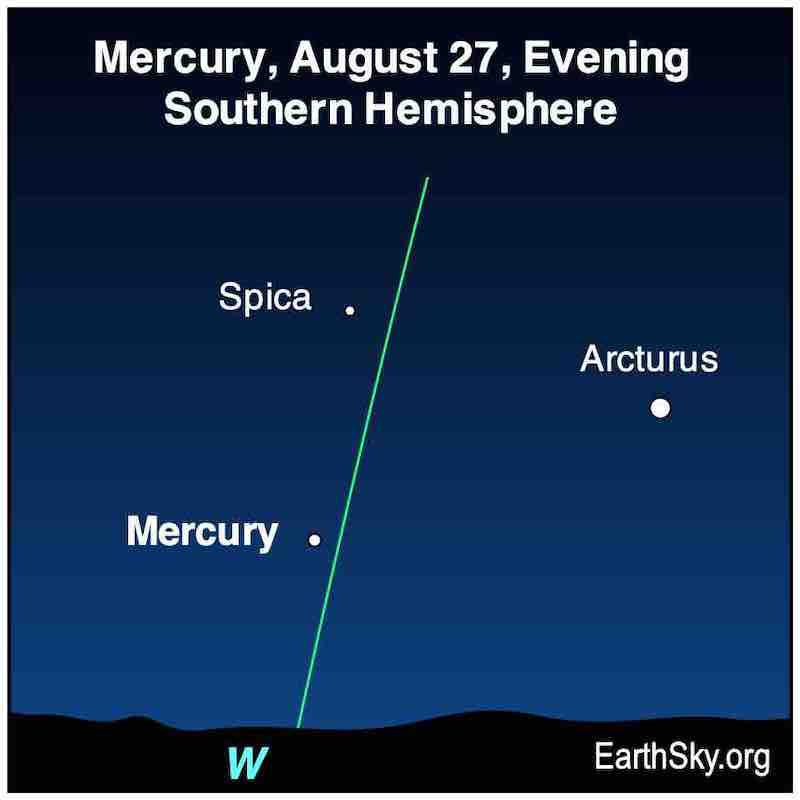
At greatest elongation in August 2022:
– Mercury’s distance from sun on the sky’s dome is 27 degrees.
– Mercury’s elevation in our Northern Hemisphere sky doesn’t improve, as the planet approaches greatest elongation in late August. That’s because the ecliptic (path of the sun, moon and planets) lies at such a narrow angle to the evening horizon at this time of year. So Mercury’s movement away from the sun carry it southward along the horizon, instead of upward.
– Mercury shines at magnitude 0.2.
– Through a telescope, Mercury appears about 53% illuminated, in a waxing gibbous phase, 7.2 arcseconds across.
For precise sun and Mercury rising times at your location:
Old Farmer’s Almanac (U.S. and Canada)
Timeanddate.com (worldwide).
Stellarium (online planetarium program)
Mercury events in 2022 and 2023
Aug 27, 2022: Greatest elongation (evening)
Sep 23, 2022: Inferior conjunction (races between Earth and sun)
Oct 8, 2022: Greatest elongation (morning)
Nov 8, 2022: Superior conjunction (passes behind sun as seen from Earth)
Dec 21, 2022: Greatest elongation (evening)
Jan 7, 2023: Inferior conjunction (races between Earth and sun)
Jan 30, 2023: Greatest elongation (morning)
Mar 17, 2023: Superior conjunction (passes behind sun from Earth)
Apr 11, 2023: Greatest elongation (evening)
May 1, 2023: Inferior conjunction (races between Earth and sun)
May 29, 2023: Greatest elongation (morning)
Jul 1, 2023: Superior conjunction (passes behind sun from Earth)
Aug 10, 2023: Greatest elongation (evening)
Sep 6, 2023: Inferior conjunction (races between Earth and sun)
Sep 22, 2023: Greatest elongation (morning)
Oct 20, 2023: Superior conjunction (passes behind sun from Earth)
Dec 4, 2023: Greatest elongation (evening)
Dec 22, 2023: Inferior conjunction (races between Earth and sun)
Heliocentric view of Mercury August 2022
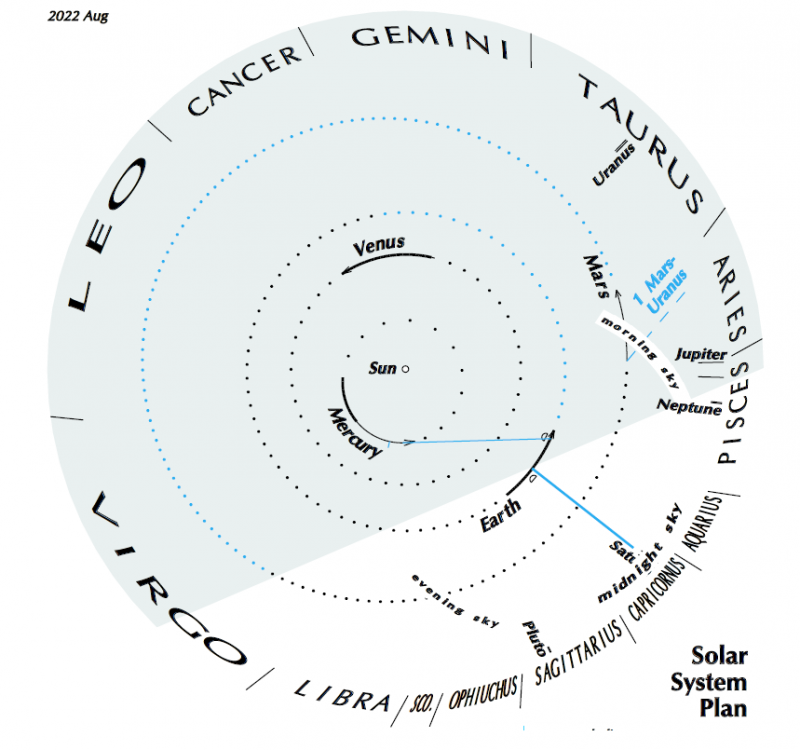
A comparison of elongations
Not all of Mercury’s greatest elongations are created equal. Indeed, some are greater than others. Ultimately, the farthest from the sun that Mercury can ever appear on the sky’s dome is about 28 degrees. The least distance, comparatively, is around 18 degrees.
Also, elongations are better or worse depending on the time of year they occur.
In the autumn for either hemisphere, the ecliptic – or path of the sun, moon and planets – makes a narrow angle to the horizon in the evening. But it makes a steep slant, nearly perpendicular, in the morning. So, in autumn from either hemisphere, morning elongations of Mercury are best. Then, Mercury appears higher above the horizon and farther from the glow of the sun. Evening elongations in autumn are harder to see, however.
But, In the spring for either hemisphere, the situation reverses. The ecliptic and horizon meet at a sharper angle on spring evenings and a narrower angle on spring mornings. So, in springtime for either hemisphere, evening elongations of Mercury are best. Meanwhile, morning elongations in springtime are harder to see.
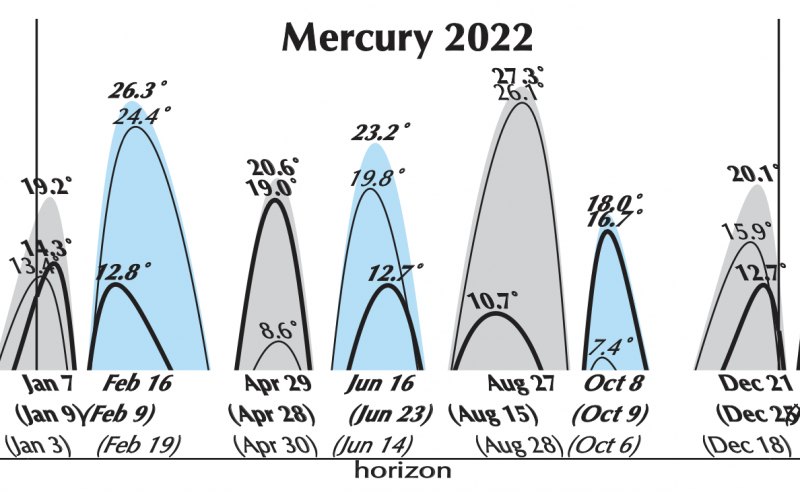
Photos from our community

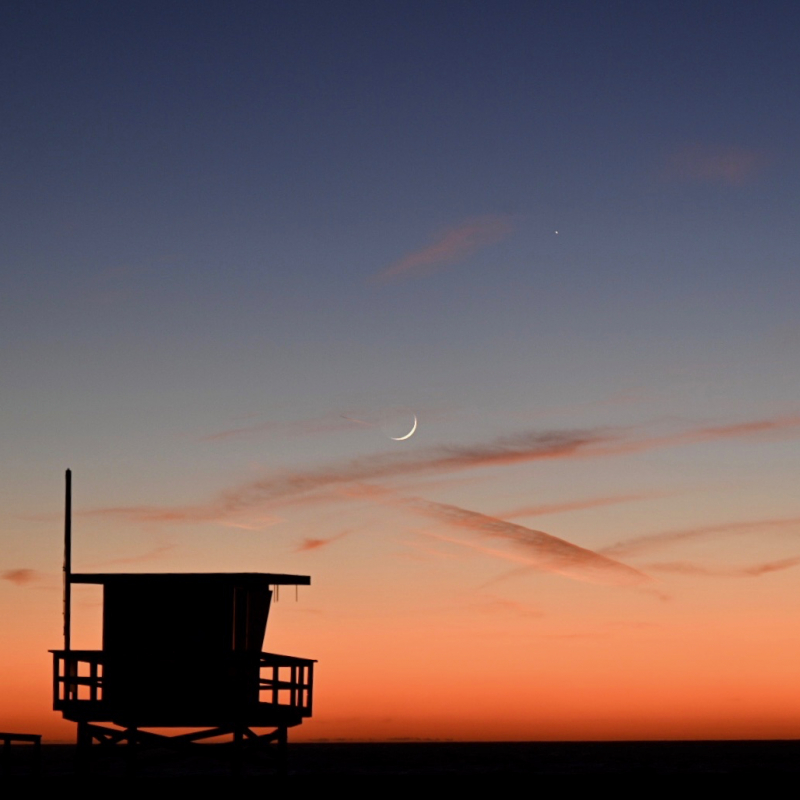
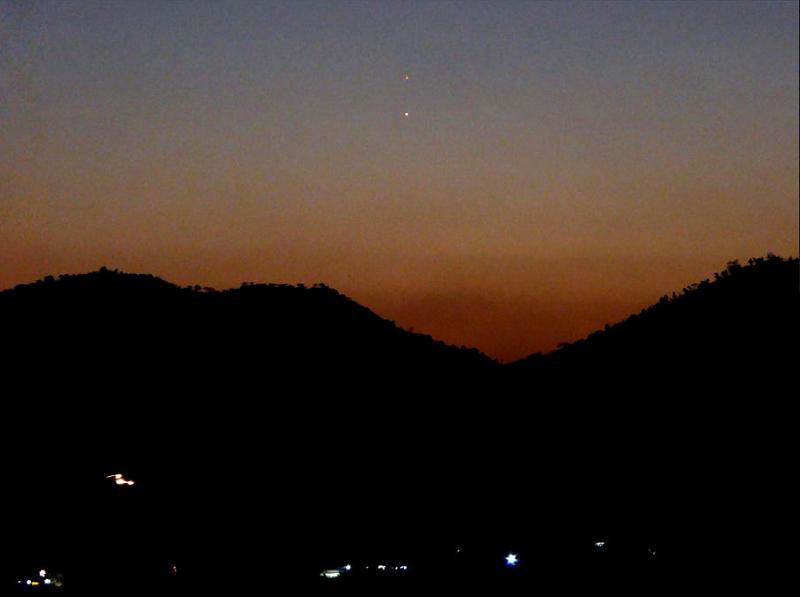
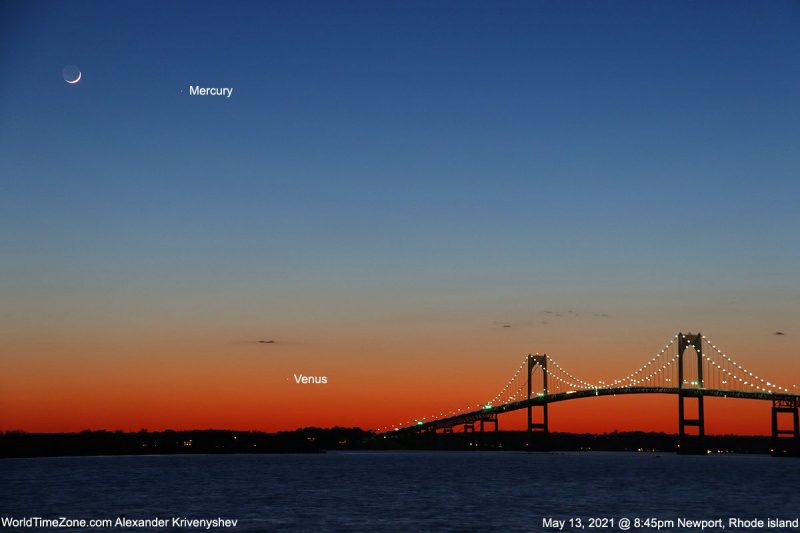
Submit your photos to EarthSky here.
Some resources to enjoy
Read about greatest elongations, superior and inferior conjunctions: Definitions for stargazers
See the moon phase for every day in 2022. EarthSky lunar calendars now available! Going fast!
Bottom line: Mercury is currently visible during its evening apparition. Look in the sunset direction, as the sky is darkening. The planet reaches greatest elongation on August 27, 2022.
The post Mercury after sunset: Greatest elongation is August 27 first appeared on EarthSky.
0 Commentaires